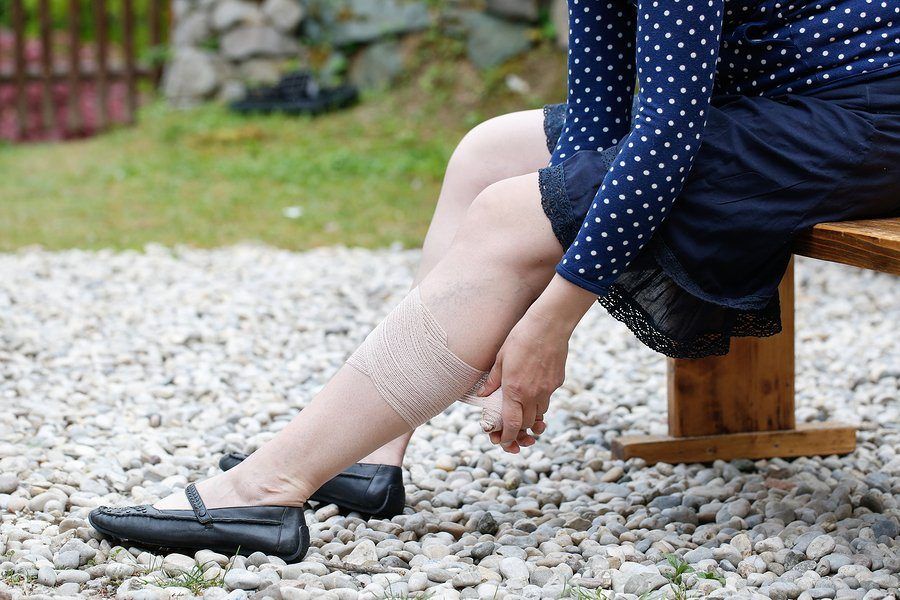Varicose veins often occur in older people, or those who are pregnant, obese and have a family history of the condition. This is typically not painful, but may cause some discomfort or soreness in some instances. This guide is designed to help you better understand what varicose veins are, how it should be treated, and how it could impact your life.
What Are Varicose Veins?
Varicose veins are a condition where your veins are twisted, bulge and appear like thick purple ropes under your skin. In some cases, these veins can cause discomfort and pain. An improper flow of blood within your body causes veins to become enlarged, and thick – ultimately resulting in a condition known as varicose veins.
Blood that gathers inside varicose veins is prevented from accessing nutrients and oxygen, while the veins fail to tolerate high pressure. This allows red blood cells to leak into the leg tissues, which can cause painful swelling over time – and causes the skin to become dark and discoloured.
Some of the causes of varicose veins include:
- Pregnancy – Pregnant women can sometimes develop varicose veins as part of the many complexities they face during pregnancy – especially as they reach the later stages of their third trimesters. In many instances, these veins will disappear once the baby is born.
- Standing for extended periods of time – Your blood doesn’t flow properly if you remain seated or standing in the exact same position for extended periods of time because your muscles fail to contract, which doesn’t pump the blood needed for the heart. This is why it is important to get outside and do some exercise!
- Straining – chronic constipation, chronic cough and enlarged prostrate can also lead to varicose veins.
- Obesity – Being overweight will put added pressure on the lower half of your body, which eventually can lead to the onset of varicose veins.
- Family history – Varicose veins, like several other diseases, are considered to be hereditary. If a close member of your family has suffered from this condition before, the risks of you getting it are higher.
- Gender – Women have been known to be more likely to develop varicose veins in comparison to men. This has a lot to do with hormones – especially during pregnancies, menstruation cycles and menopause where your hormones can end up slackening vein walls. Even medicines like hormone replacement and birth control pills can enhance your risk of getting varicose veins.
- Advancing age – When you get older, the risk of you getting varicose veins will increase. This is because ageing results in wear and tear on your vein valves, which will reduce blood flow. Improper blood flow will cause your veins to enlarge and swell.
- Straining – Varicose veins may also be caused by certain conditions where people are required to strain for long periods of time, and typically occur on the legs.
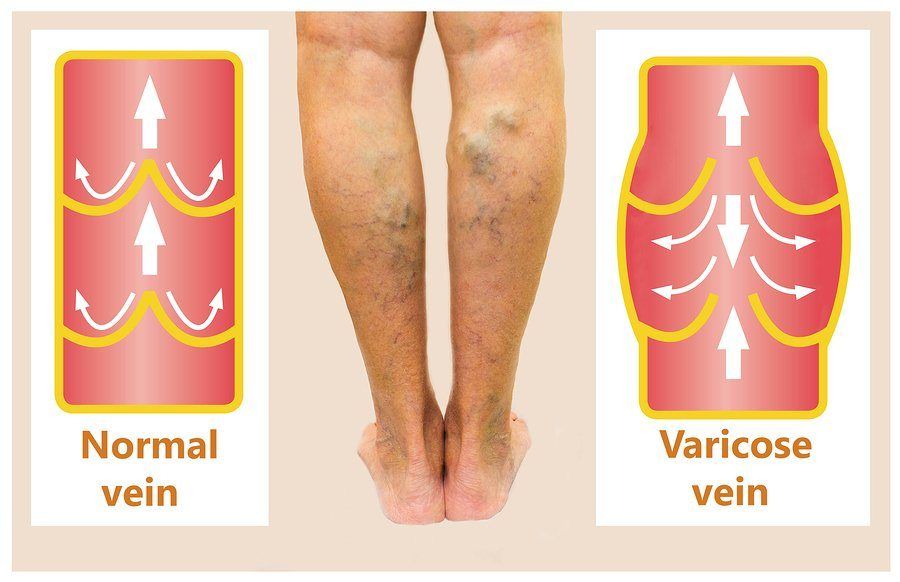
What Are The Symptoms Of Varicose Veins?
Varicose veins, if left untreated for extended periods, can lead to more serious problems such as deep-vein thrombosis or blood clots. It could also put you at higher risk of other disorders within your circulatory system, which is why it is important to understand and treat this condition before it turns life threatening.
Some of the signs that you have varicose veins include:
- Veins that are dark purple or blue in colour
- Twisted and bulging veins
- Achiness or heaviness in the legs
- Burning, tenderness and muscle cramping in the lower part of your legs
- Pain after standing or sitting for extended periods
- Ulcers visible on the legs and skin
If you notice any of these signs, it could mean that you’re suffering from this condition and will require immediate medical attention. Spider veins are similar to varicose veins but they tend to be smaller and are found closer to the surface of the skin.
While usually found on the legs, they may also be found on your hands and face – with a red, purple of blueish tint to them. Varying in size and appearance, they are often known as spider veins because they present a spider’s web-like appearance.
Can Varicose Veins Lead To Other Medical Conditions?
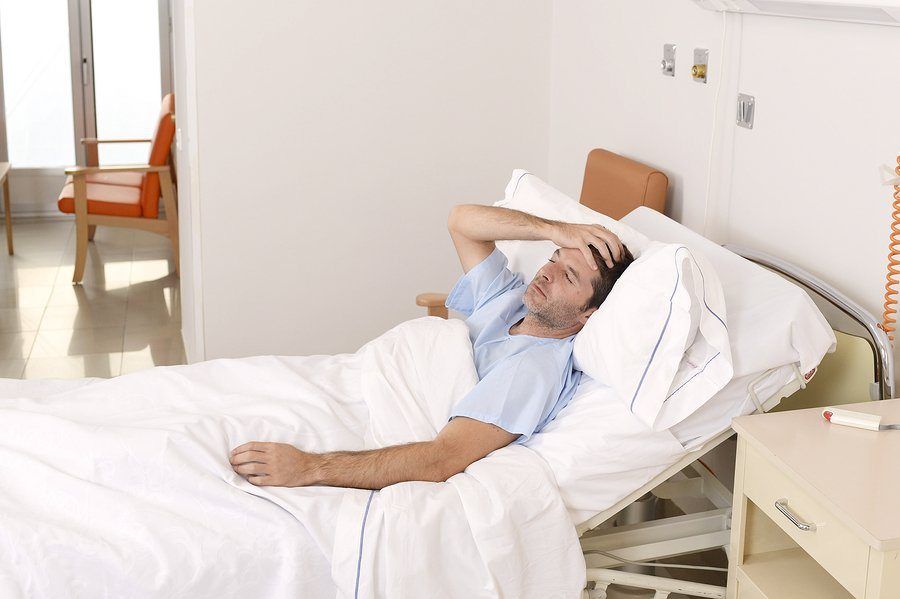
Varicose veins are common and are not usually a sign of any serious problems. But, in some cases, it can be a sign of obstructions within the deeper veins – known as deep-vein thrombosis.
In this instance, immediate medical attention and treatment is required to ensure that serious ailments and complications do not develop.
Some of the other complications of varicose veins, although rare, include:
- Hemorrhage – A hemorrhage occurs when the veins near the skin erupt. This type of bleeding is usually minor, but it will require medical intervention because it could possibly happen again.
- Superficial thrombophlebitis – This is a condition that causes vein inflammation just below the skin’s surface and is a result because of decreased blood flow. You may start to experience skin redness, vein tenderness and swelling.
- Leg ulcers – Ulcers can be tremendously painful and may appear near varicose veins on your skin, particularly in areas surrounding the ankles. You will notice a discoloured spot first appearing on your skin before the formation of the ulcer. If you notice an ulcer forming, be sure to get in touch with your doctor immediately.
- Blood clots – Blood clots can be a sign of obstructions within the deeper vein. In this instance, your legs will swell up significantly. If you notice your leg swell up, seek medical attention as you may be suffering from a blood clot, which can harm your body if left untreated.
- Hyperpigmentation – If untreated, varicose veins can result in blood leaking into your leg tissues, which could cause painful inflammation and discolouration.
- Lipodermatosclerosis – If your leg tissues are inflamed for long, they become heavier and firm. You will start to feel like your legs have become tender, and you may find it hard to relax and move.
There can be adverse consequences for failing to treat varicose veins, which may vary from person to person depending on their individual situations.
While some people may only experience mild consequences like fatigue and swelling, more serious consequences can include ulcers, bleeding, blood clots and a life threatening condition like deep-vein thrombosis.
Can You Prevent Varicose Veins?
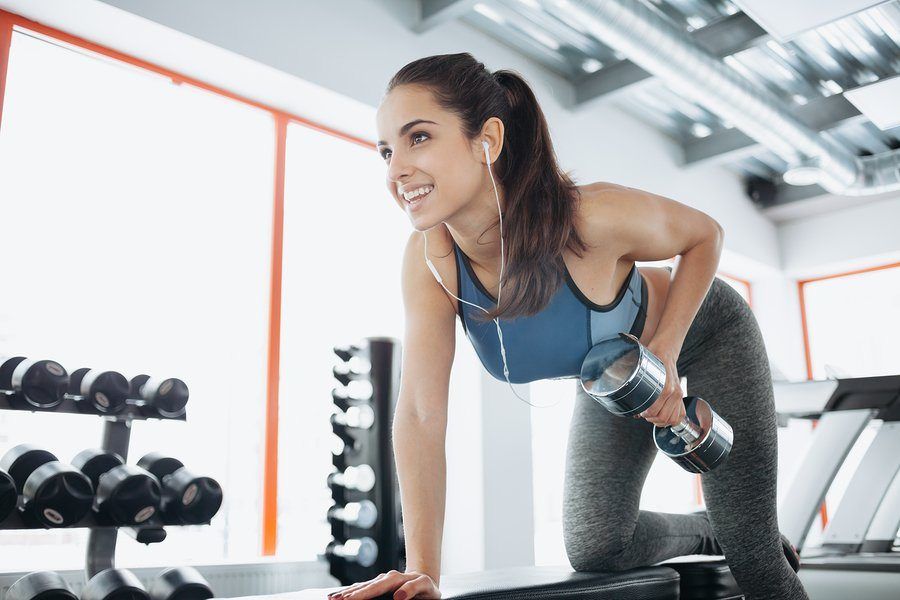
Varicose veins cannot be completely prevented, but improving your blood circulation and muscle tone through regular exercise – like walking and jogging – can reduce your risk and slow down the condition. What can you do to prevent the onset of varicose veins too early in your life?
- Walking is a great exercise to encourage blood circulation in your legs.
- Shedding excess weight through regular exercise will take the pressure off your veins.
- Eating a balanced meal, which is low in salt and high in fibre can prevent swelling that can result from constipation and water retention.
- Avoiding standing for long periods in high heels because of the pressure on your legs and ankles. Instead, low-heel shoes are much better suited for your veins.
- Avoiding tight clothes around your legs, groin and waist as they can restrict proper blood circulation.
- Raising your legs above your heart level every once in a while will help to improve circulation within your veins.
- Lying down with your legs raised over pillows can help to increase blood flow and can reduce the risk of developing varicose veins.
- Moving around every half an hour to an hour, or changing your position often to ensure that blood circulation is not restricted.
These simple, but effective changes to your lifestyle can reduce and prevent the onset of varicose veins for an extended period – taking away the discomfort and pain that has become associated with it.
How Can You Treat Varicose Veins?
Varicose veins are best treated before they turn into chronic conditions that require significant medical intervention. If you’ve been unable to prevent them from occurring.
Get in touch with your healthcare provider to understand when you might need treatment to cure varicose veins. If surgery is not for you, there are several non-invasive a treatments including lifestyle changes and medical procedures.
Some of the treatment options include:
Sclerotherapy
A doctor injects a liquid chemical into your varicose veins to shrink and collapse them. Eventually they will dissolve. This is a relatively speedy procedure with no special anaesthesia required. You can return to your normal routine almost immediately.
Endovascular laser therapy
This technique uses a laser to destroy the vein and is usually undertaken in a doctor’s office. The procedure takes between 30 and 45 minutes. An ultrasound machine is used to guide the laser into the vein.
The laser is then fired up and the vein is destroyed from the inside with minimal damage to surrounding tissues. Some local anaesthesia may be required, but recovery is relatively quick and there is minimal pain involved. You may experience a numbing sensation and some mild bruising, but nothing more.
Radiofrequency ablation
This is a similar technique to endovascular laser, but it uses heat to destroy the vein. The procedure is performed under local anaesthesia and takes about 30 minutes. Short-term results are great with radiofrequency ablation.
Varicose veins surgery
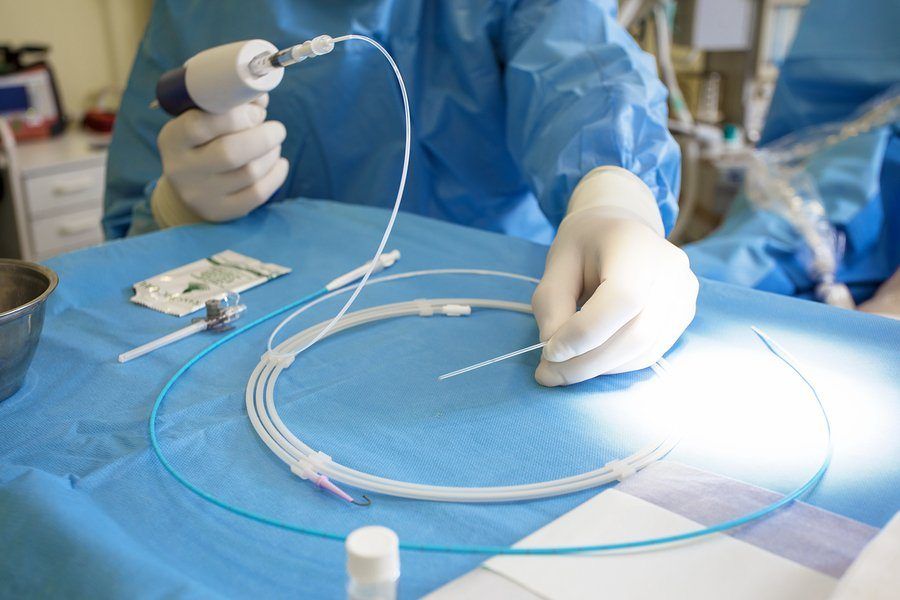
Several surgical procedures can relieve varicose veins but they are not necessary for everyone. For instance, this option would not be advisable for women who have just delivered because varicose veins may naturally disappear once the baby is born.
When non-invasive techniques fail to work, surgery may be treated as the solution. Patients should discuss the risks and benefits of surgery with their healthcare providers before choosing this option.
Ligation
This was previously the only surgical treatment for varicose veins before more advanced treatments were made available. An incision was made at the groin and the saphenous vein was tied to prevent blood flow. This caused the vein to shrink and become less visible, and was typically undertaken under local anaesthesia.
Caring For Varicose Veins At Home
Varicose veins can even be treated at home to ensure they don’t get worse than they already are. Compression garments can help to treat varicose veins.
They typically work by supporting weaker veins and improving blood circulation within the body. You can wear these compression stockings in the morning before you start walking and before your veins appear to swell up.
Stockings can also be effective in preventing skin complications, but only work if they are worn regularly. If you wear them and tend to experience more pain, you should stop wearing them immediately. Seek medical help in this case.
Another good way to reduce the bulging of varicose veins is to avoid alcohol completely as this could make them worse. Smoking and poor nutrition also serve as aggravating factors, so it’s best to stay away from them as much as possible.
Obesity is another symptom of varicose veins, so finding ways to lose weight will help to reduce your problems considerably.
Some ways to lose weight include:
- require immediate medical attention – with balanced foods.
- Avoiding junk foods like chips, pies, cheese-based dishes and burgers.
- Introducing more protein-based foods like chicken and fish into your meals.
- Regularly exercising through walks, jogs and joining the gym.
- Reduce salt consumption.
- Avoid sugary drinks, juices and sodas.
- Eat whole and unprocessed foods.
- Joining a sport or an activity-based course.
- Going swimming as often as possible.
- Spending time outdoors instead of being cooped up inside the home or office.
- Taking on new activities such as yoga or pilates to improve blood flow within your body.
Professions Most At Risk Of Developing Varicose Veins
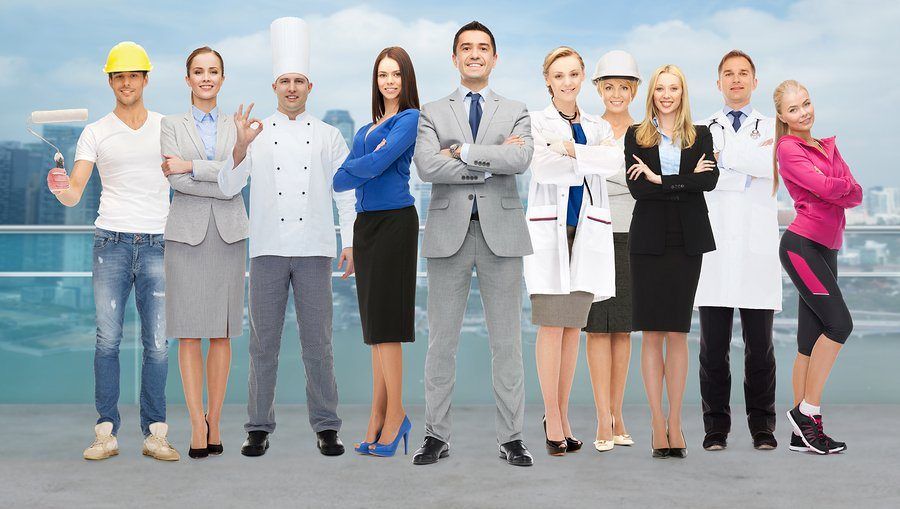
Some jobs and professions can put you at greater risk of developing varicose veins than others simply because of the nature of the work involved – especially ones that require standing or sitting for long periods without moving around too much.
Here is a list of professions most at risk of varicose veins:
- Hairdressers: Hairdressers spend a great deal of time standing, but they never really move around. Spending long hours on their feet without any form of movement can trigger varicose veins in their legs over time.
- Teachers – Teachers spend a lot of time standing up or sitting down in a classroom, but they rarely move around a great deal. Ultimately, this will cause varicose veins to develop in their legs. Of course, physical education teachers may be the exception in this case depending on how active they are.
- Bartenders – Bartenders standing in one place while serving drinks could end up straining their legs and causing varicose veins to develop over time.
- Business Professionals – Professionals who spend a significant amount of time sitting in front of their computers without getting enough exercise could be susceptible to obesity and varicose veins.
- Cashiers – Cashiers tend to spend long hours standing but don’t usually move from where they are. These long hours could eventually contribute to the development of varicose veins over time.
- Air Travel Professionals – Pilots and flight attendants can also be susceptible to varicose veins because of the lower pressure in air planes. This could even become a problem for frequent travelers who are stuck sitting on long-haul flights for extended periods without moving around too much.
- Chefs – Chefs tend to spend long hours over hot stoves and in heated environments, which can trigger the development of varicose veins because of minimal movement.
Varicose veins typically occur because people don’t move around too much. While people engaged in these professions cannot change their activity schedules from a work perspective, they must try to improve their movement beyond working hours to prevent the development of varicose veins.
Factors like regular exercise and good diets will help to reduce their risk of development varicose veins in time.
What To Do If You Have Varicose Veins?

Varicose veins don’t just go away once they appear. In fact, they will need special treatments to ensure they disappear and do not recur. The best way to avoid them is through preventive measures in your lifestyle from the start – which may be easier said than done, but isn’t impossible.
If you eventually do have varicose veins, a number of treatment procedures are available to you, including surgery and laser methods. But you must keep in mind that this condition can recur depending on the treatment methods used and their effectiveness.
In some instances, the body forms a new vein in place of the old one – especially if the old one wasn’t completely destroyed.
The truth is that no treatment has proven to be completely free from recurrences. And because varicose veins occur over time, no treatment can completely prevent the onset of this condition once again in the future.
While varicose veins can be severe or mild, those suffering should ideally contact a vascular surgeon so that they are not neglected, especially if you want to ensure no major implications to your health in the long haul.
Consulting with a licensed vascular specialist for an initial evaluation of your condition will help you determine the best course of action for your particular situation – and whether or not additional treatments are required to bring down your risk of developing more serious conditions.

